People travel to Venice every other year specifically to see the Biennale. Me? I just happened to be there when it was on. If it’s your first time (planned or spontaneous), here are a few tips.
Take the time to do the Biennale justice
We just happened to be in Venice and noticed it was on. I was living in a flat in London eons ago when I first heard of the Biennale. My then flatmate arrived home from work, all excited that she was going. She was appalled that I hadn’t a clue what she was talking about. I’ve been carrying a vague notion with me since that it has something to with architecture and sculpture and it was the sculptures I expected but didn’t see. More than 70 counties have individual exhibits tied to an overarching theme – this year it is Freespace.
With the theme of FREESPACE, the Biennale Architettura 2018 (architecture exhibition) presents for public scrutiny examples, proposals, elements – built or unbuilt – of work that exemplifies essential qualities of architecture which include the modulation, richness and materiality of surface; the orchestration and sequencing of movement, revealing the embodied power and beauty of architecture.
The map is pretty self-explanatory but even sticking your head into each pavilion is going to take time. Engaging with the interactive installations will take more. Reading the bumf will take more again. Think at least one whole day for Giardini and a good half-day for Arsenale.
Don’t overdose
Tickets for both main exhibition areas (Giardini and Arsenale) are valid for consecutive or non-consecutive days – if you overdose on Tuesday, you can take Wednesday off and come back on Thursday. Tickets are €25 with an extra €7 for a guided tour in English.
Dress appropriately
Wear comfortable shoes because you’ll have no problem getting in your daily 10 000 steps at one site alone. Don’t carry any additional weight – it gets tiring lugging bags and backpacks around – some exhibits (UK and Hungary) include climbing steps – lots of steps. Bring water, though. And there’s plenty of space to sit and enjoy, so if you fancy bring lunch, too. But there are cafés and such on site.
Remember to breathe at the Biennale
It can all be rather overwhelming. There’s so much to see and not everything will resonate or make sense. Don’t try too hard though – let it all wash over you and you’ll remember the bits that make an impression.

The Swiss played with perspective. Walking through this designed space with its small doors and massive doors, low countertops, and high countertops gave those of average height a good sense of what it might be like to be really tall or really short. At least, that’s what I left with. What they had in mind was to draw attention to the bland interiors of rental properties. Sometimes the obvious needs to be pointed out to me.

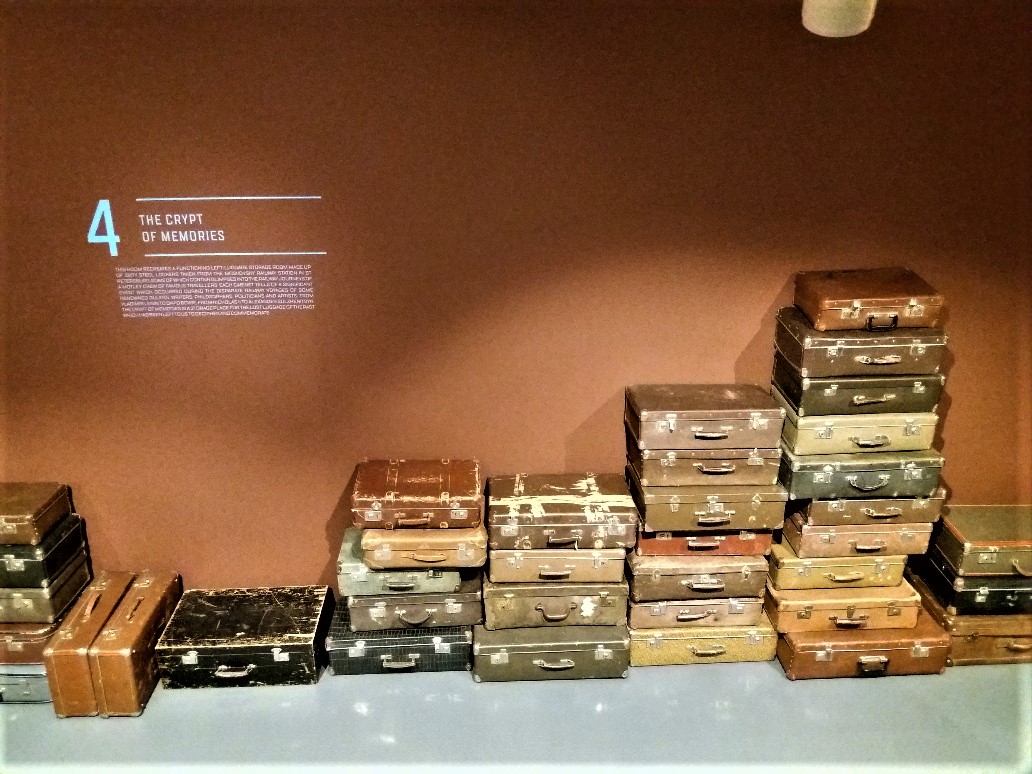
The Russian exhibit was more of my style. It included a basement room of open luggage lockers, each with something significant inside, be it a photo of a famous person or a book or a hat. Each had a story. The piles of suitcases reminded me of something Maya Angelou said when I saw her speak in London all those years ago – about getting on the next train with as little luggage as possible. Of all the pavilions I visited, this is one I’d like to have spent more time in.

The German Pavilion explores the concept of walls, with an interesting series of opinions from real people. It also focuses on various plans by architects for replacing the Berlin Wall space… Another one I’d like to have spent more time at.

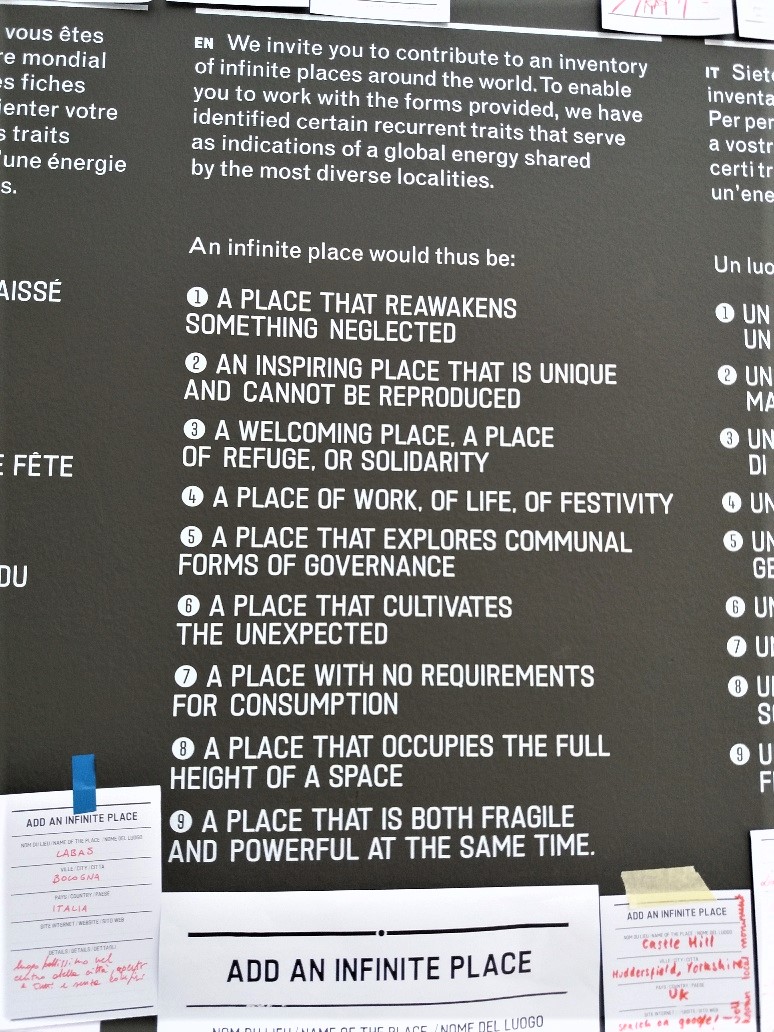
Many of the exhibitions invited audience participation, the French Pavilion being a case in point. I quite like the idea of rebirthing disused buildings and spaces.
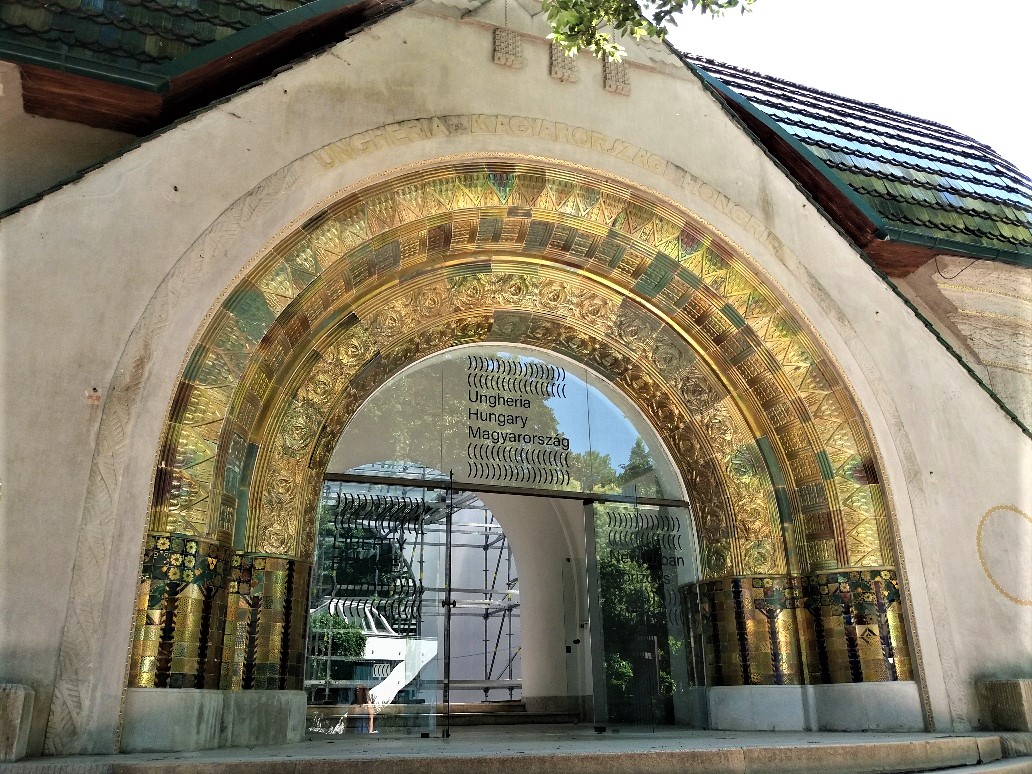
As we wandered around, I tried to spot which pavilions have been built by the exhibiting country and which had been adapted from previous years. It was hard to tell. Except for Hungary. From the roof tiles to the mosaics, it was obvious that this had a Hungarian imprint. Inside, the exhibit focused on the public occupation of Szabadság híd (Liberty Bridge) in 2016 when it was traffic-free.
The bridge instantly turned into a restorative place, altering the understanding of liberty and autocracy, formal and informal, public and private in a city context. The place makers were mainly Millennials, growing up after the political changes of the late 1980s, giving the historical place a different function. The event draws attention to a transforming post-social mentality into a new, entitled and free enjoyment of urban public space by recent generations. What happened on the bridge? The exhibition examines fundamental urbanistic issues based on the ideology-free occupation of the bridge. What makes a public space free? How does a city bridge become a symbol of freedom? How can we change our own identity by transforming our city? How an image of a tram route covered by yoga mats can challenge our view of public spaces? The exhibition aims to create an innovative viewpoint within the Hungarian pavilion, allowing for a liberating experience of new perspectives.
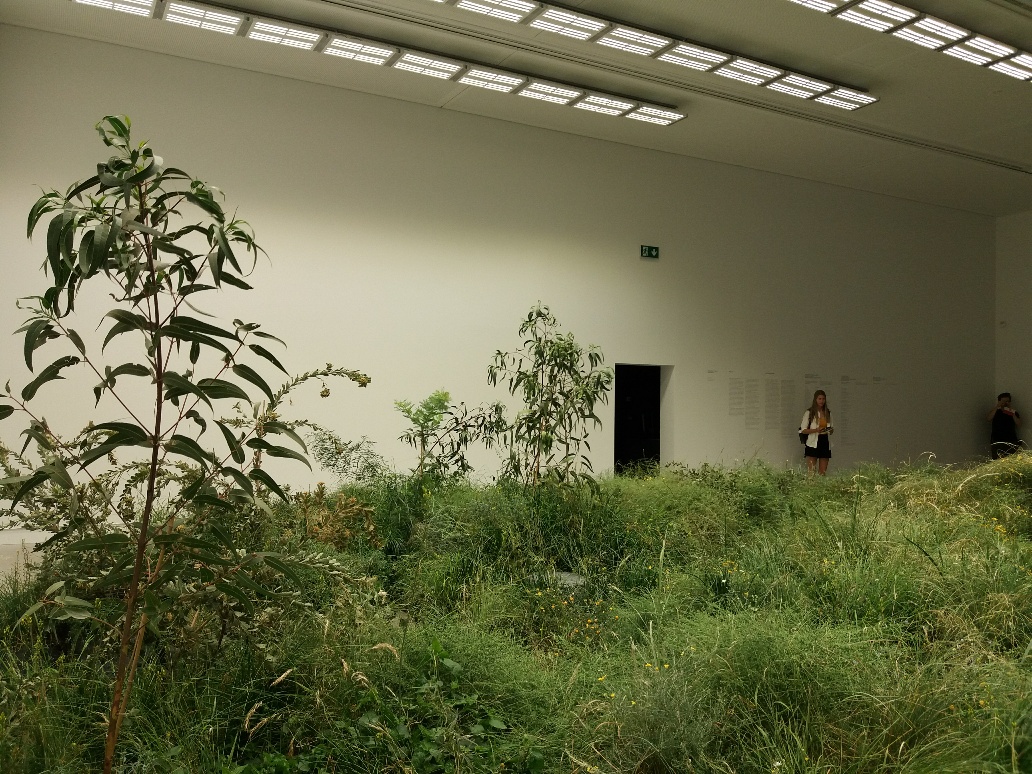
The Australians brought the outside inside in their exploration of the relationship between architecture and endangered plant species, a marked changed from the focus on the built environment.

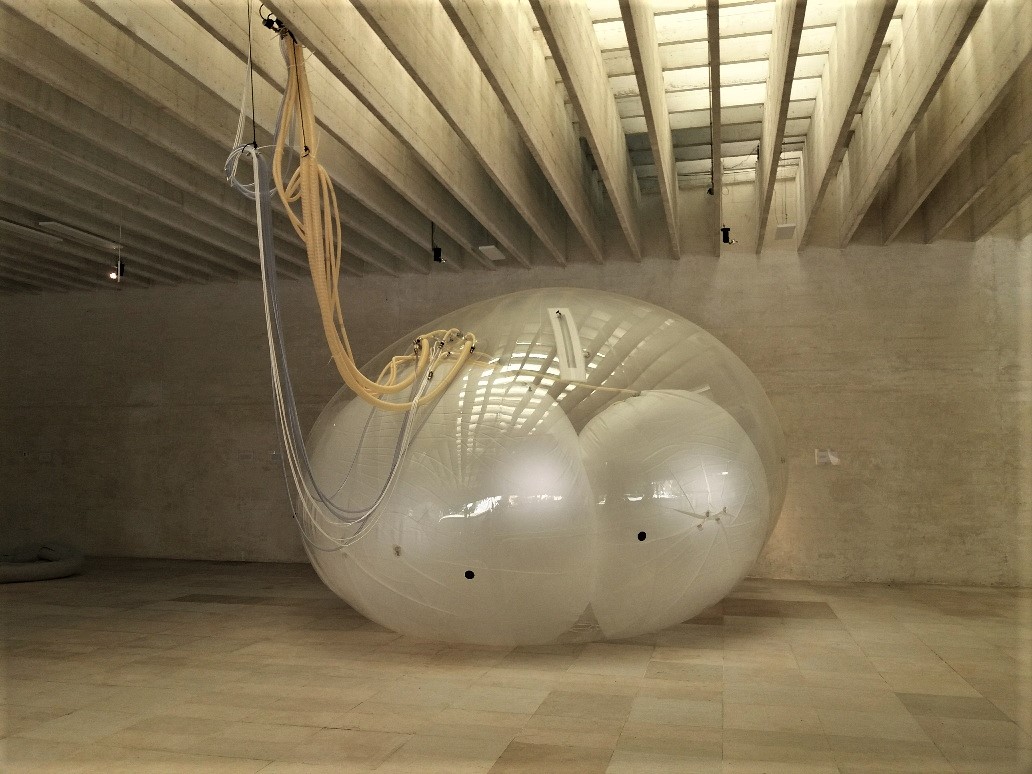
The Nordic exhibition was otherworldly and one of those that needed a little more imagination than I was bringing to the table.

The main exhibition hall in Giardini hosts with individual projects and exhibitions and is quite something.


The Biennale runs until 25 November this year. If you’re in Venice, with a day to spare, put it on your list. And if you’re going and know an architect who isn’t, pick up the leaflets and brochures available in most of the pavilions. There’s hours of reading in them.
Share this:
- Click to share on X (Opens in new window) X
- Click to share on Facebook (Opens in new window) Facebook
- Click to share on Pinterest (Opens in new window) Pinterest
- Click to share on LinkedIn (Opens in new window) LinkedIn
- Click to share on Reddit (Opens in new window) Reddit
- Click to share on WhatsApp (Opens in new window) WhatsApp
- Click to share on Pocket (Opens in new window) Pocket
- Click to share on Telegram (Opens in new window) Telegram
- Click to email a link to a friend (Opens in new window) Email


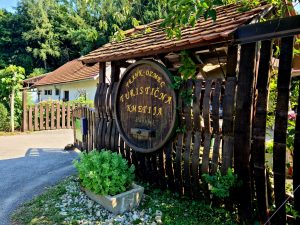



3 responses
I spent two full days visiting Biennale in 2009. For some years now, the format has been modern art on odd numbered years, architecture on even. I’d love to see the architecture. I’d like to go every year. One more tip: it’s good to have a companion, someone to talk to, to say ‘wow’ or ‘what do you think of that’ or even ‘that’s rubbish’.